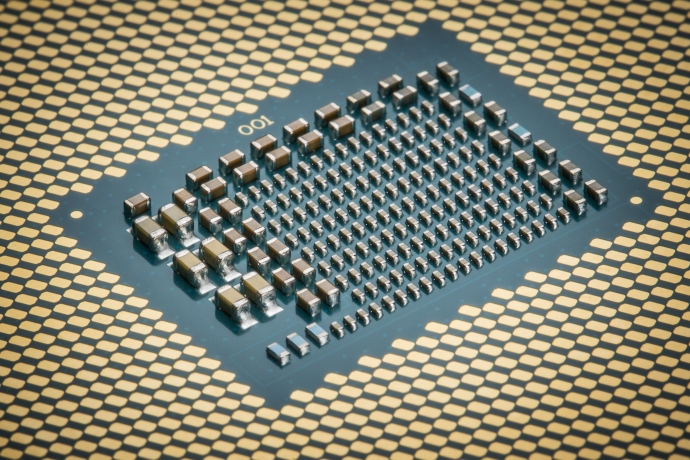On May 30, microprocessor giant Intel (INTC 1.77%) announced its new Skylake-X processor family aimed at high-end desktop personal computers. At the very top of the product stack is a chip known as the Core i9-7980XE.
This chip, based on what we know about it, is quite a beast. It packs 18 server-grade processor cores as well as 44 PCI Express lanes, among other goodies. Additionally, Intel is pricing the chip at $1999.

Image source: Intel.
About $1,999 for a consumer-grade computer processor is certainly expensive, but it's worth noting that the value proposition of this new chip should be substantially better than that of the company's previous high-end desktop flagship chip, the Core i7-6950X. The 6950X had only 10 cores and 40 PCI Express lanes for around $1,700 at launch, and it managed to sell better than Intel had expected it to.
The success of the 6950X in the marketplace makes me hopeful that the 7980XE (which is arguably a much better product than the 6950X was, relatively speaking) will do well in the market, too.
It's worth noting, though, that while some of the basic specifications of the Core i9-7980XE are known (core count, PCI Express lanes, etc.), Intel hasn't yet disclosed the base or turbo boost frequencies at which the chip will run.
Although these chips will primarily be sold to users who will run these chips out of specification, the frequencies at which the chip runs out of the box is still an important consideration. Here's where I think Intel needs to peg them on the 7980XE for it to be as compelling as realistically possible.
Low base but high Turbo Boost 2.0 speeds
Intel typically tells consumers the base frequency of a given chip as well as the maximum Turbo Boost 2.0 frequency at which the chip can run when only one or maybe two cores is being used.
Given that there are 18 cores on the 7980XE, it's not realistic to expect that these cores will be able to run at high frequencies when they're being loaded up simultaneously. However, for the 7980XE to work well as a gaming chip in addition to a productivity chip, the chip needs to ramp up to high frequencies when only a few cores are in use (e.g., what most games will be able to use).
Intel did a respectable job of this with its 10-core Core i9-7900X; it comes rated at a base frequency of 3.3GHz, but the chip offers a maximum Turbo Boost 2.0 speed of 4.3GHz, which should make it quite good for gaming applications out of the box.
What's more is that since any of the 10 cores found on the 7900X can be tapped to run at 4.3GHz when executing a workload that can only use a few cores, every core on the chip needs to have the capability to run at 4.3GHz. This makes it harder for Intel to find "good" chips within a given batch, although for the $999 asking price of that chip, Intel really must do it.
For the 7980XE to be cleanly superior to the $999 Core i9-7900X, it should offer a maximum Turbo Boost 2.0 speed of 4.3GHz, meaning that each one of the 18 cores on the chip needs to be able to run at 4.3GHz -- no easy feat.
Moreover, the turbo speeds of the chip in 1-10 core operation really needs to match the 1-10 core turbo speeds of the 10-core Core i9-7900X. If Intel can offer that, then the 7980XE won't be a compromise relative to the cheaper models in the product stack and should easily be worth its asking price.
If Intel compromises on that to any significant degree, then even enthusiasts who generally demand the best and are willing to pay for it might forgo the Core i9-7980XE in favor of a cheaper model, like the Core i9-7900X.
Given Intel's strategy to try to upsell consumers to better, more expensive processors as much as it can, compromising on this would be less than ideal.





